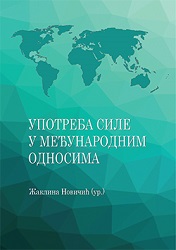ЗАБРАНА ОРУЖЈА ЗА МАСОВНО УНИШТЕЊЕ: ОД ЖЕНЕВЕ ДО ЊУЈОРКА ВЕК КАСНИЈЕ
THE BAN ON WEAPONS OF MASS DESTRUCTION: FROM GENEVA TO NEW YORK A CENTURY LATER
Author(s): Vesna Knežević-Predić, Miloš Hrnjaz
Subject(s): Law, Constitution, Jurisprudence, International Law, Human Rights and Humanitarian Law, Military policy, Peace and Conflict Studies
Published by: Институт за међународну политику и привреду
Keywords: weapons of mass destruction; international humanitarian law; chemical weapons; biological weapons; nuclear weapons; the United Nations
Summary/Abstract: The origins of the ban on weapons of mass destruction should be sought in the ethical condemnation of the use of poison weapons that preceded the emergence of modern international humanitarian law. The process of transforming this ethical condemnation into a more precise, multilateral, treaty ban began at The Hague Conference in 1899, and could be completed with the entry into force of the Treaty on the Prohibition of Nuclear Weapons, adopted in New York in 2017. The adoption of treaties aimed at a comprehensive ban on weapons of mass destruction has been marked by numerous processes that are specifically highlighted in this study: the gradual expansion of the material and personal scope of application of these treaties; the gradual creation of awareness of the legal obligation to refrain from the use of weapons of mass destruction, the existence of which is no longer disputed in relation to biological and chemical weapons, but remains controversial in relation to the use of nuclear weapons; the active participation of international organizations (the League of Nations, the United Nations, the International Committee of the Red Cross, and more recently international non-governmental organizations).
Book: Употреба силе у међународним односима
- Page Range: 59-90
- Page Count: 32
- Publication Year: 2018
- Language: Serbian
- Content File-PDF

